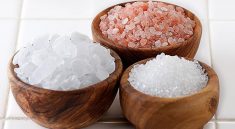Lack of sexual desire can be a frustrating condition. It can be the result of a number of factors, including physical, emotional, and social issues. A lack of libido can affect a person’s quality of life, and the best way to treat it is to get a medical diagnosis and treatment plan. There are several options available to help fix a low sex drive, and patients should discuss these options with their doctors.
The most common form of female sexual dysfunction is hypoactive sexual desire disorder (HSDD), which involves a decrease in sex interest. While there is no known threshold for HSDD, there are several symptoms of the condition, including a decrease in sexual thoughts and a lack of receptivity to sexual advances. HSDD symptoms can last for months, and it can be frustrating for a person who is experiencing a decline in sex.
Low desire can occur in women of all ages. During pregnancy, menopause, and neurological diseases, women may experience lower sex drive. This condition can also be a result of unresolved conflict, poor communication, or poor sexual experiences. Medications for mood disorders, depression, or anxiety can reduce a woman’s desire. Increasing self-esteem and improving emotional health can be a positive step toward fixing a low sex drive.
Low desire can affect a person’s sex life and relationships. If a person experiences a decrease in sex and lack of motivation, she should seek a sex therapist. A sex therapist can determine if the problem is organic or the result of a psychosocial or medical condition.
According to the International Consultation on Sexual Medicine, a low sex drive is not normal. In fact, it is a common symptom of a range of sexual disorders. Some medications and treatments, like vardenafil, can help increase a woman’s sexual function. However, other causes of a lack of desire include anxiety, depression, and other mental health conditions.
Other medical conditions, such as diabetes, high blood pressure, and cancer, can weaken a person’s sex drive. It is unclear what impact low libido may have on precum or sexual function specifically for this. Several medications and hormone shots can be used to help improve a person’s sex.
One study found that the prevalence of a lack of desire was three times higher than the prevalence of HSDD. Women in their 20s and 30s had a significantly higher prevalence of low desire than older women. Women who were surgically menopausal had the highest prevalence of a lack of desire, while women who were premenopausal had the lowest.
Other studies have shown that there is a high prevalence of low desire among women aged 60 and above. These studies use validated self-reported outcome measures to determine a woman’s sexual function. Using the Personal Distress Scale, women who reported low desire were surveyed about their lives.
In a study published in April 2016, researchers found that there is a significant relationship between a woman’s age and her reduced desire. Researchers reported that young women were more likely to have a low desire than women in their 50s or 60s. Moreover, the prevalence of low desire was a lot higher in women with graduate degrees.
Visit “Precise Men’s Medical Center
6500 Rockside Rd. Suite 180 Cleveland, OH 44131
877-770-4001
Monday-Friday 9am-6pm
https://precisemensmedical.com”




